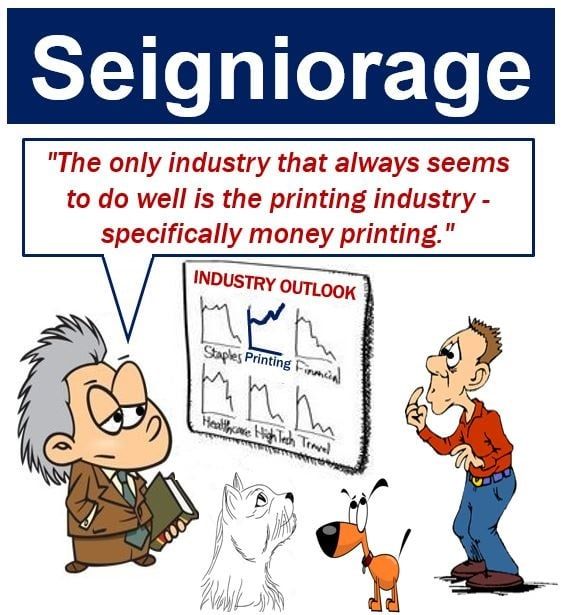Seigniorage is the difference between the face value of money, such as a $10 bill or a quarter coin, and the cost to produce it. In other words, the cost of producing a currency within a given economy or country is lower than the actual exchange value, which generally accrues to governments that mint the money.
If the seigniorage is positive, the government will make a profit; a negative seigniorage will result in a loss.

KEY TAKEAWAYS
- Seigniorage is the difference between money’s face value— paper bills and coins—and its production costs.
- Seigniorage may be counted as positive revenue for a government when the money it creates is worth more than it costs to produce.
- In some situations, currency production can result in a loss instead of a gain for the government creating the currency.
Understanding Seigniorage
Seigniorage is counted as revenue for a government when the money it creates is worth more than it costs to produce. Governments often use this revenue to finance portions of their expenditures without collecting taxes. If, for example, it costs the U.S. government 5 cents to produce $1, the seigniorage is 95 cents or the difference between the two amounts. Seigniorage gives a country the potential to turn a profit when it creates money.
While the definition of seigniorage is often the difference between the cost of printing new currency and the face value of that same currency, it is also the number of goods or services a government can acquire by printing new notes.
In some situations, currency production can result in a loss instead of a gain for the government creating the currency. This loss is commonly experienced in producing coins because the metal used to produce coins has inherent value. This value, often called the melt value, may be higher than the denomination it originally represented or, when combined with production costs, may result in a loss. For example, the U.S. penny, with a face value of one cent, cost 2.10 cents to produce in 2021—the sixteenth year in a row that production costs exceeded the penny’s face value.
Over time, the melt value can also change as market demands shift, and it can potentially lead to the value of the metal being worth more than the face value of the currency. One example is silver coins, such as the U.S. silver quarter and the silver dime.
Real-World Example of Seigniorage
Based on anticipated demand for new currency, the Federal Reserve places an order annually with the Department of the Treasury’s Bureau of Engraving and Printing and pays for production costs. The Fed provides detailed information on each currency denomination and the cost to produce it. In 2022, for example, it costs 13.8 cents to produce a $20 bill and 17 cents to produce a $100 bill.
The U.S. Mint is responsible for coin production, influenced by the number of requested Federal Reserve Bank orders. The Federal Reserve then purchases the coins at face value.
